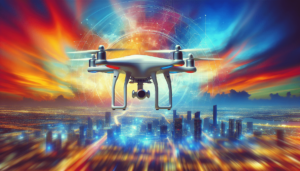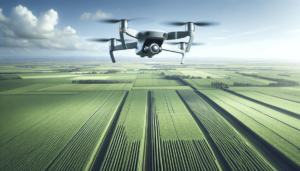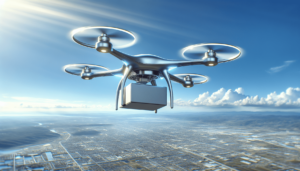Have you ever wondered how artificial intelligence is transforming the capabilities of drones? The synergy between AI and drones has unlocked unprecedented opportunities across various sectors, revolutionizing everything from agriculture to logistics. In this exploration, I’ll delve into how AI is not just enhancing what drones can do but is also setting the stage for the next phase of airborne automation.
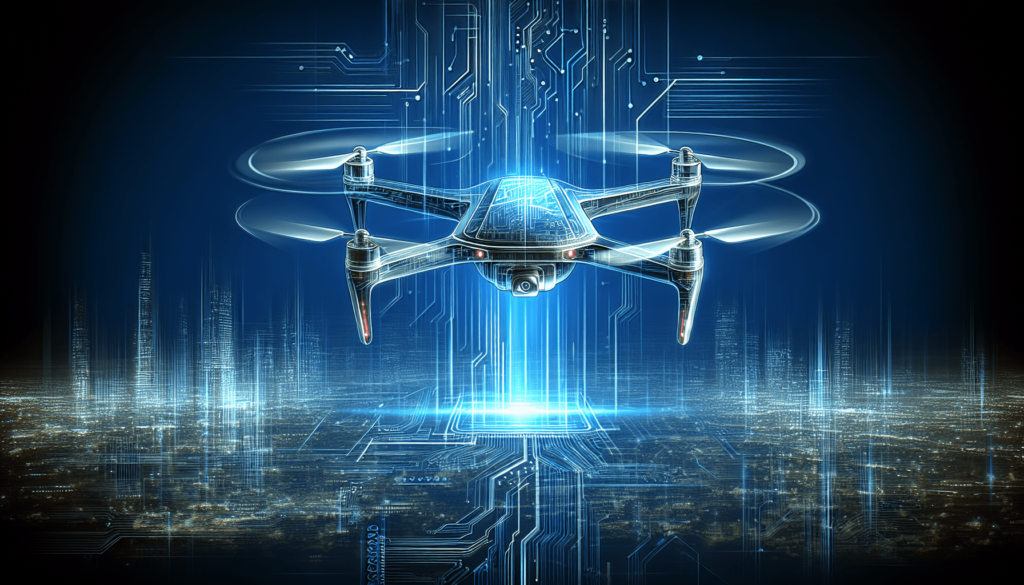
The Evolution of AI in Drones
The amalgamation of AI and drones is not a recent phenomenon; however, the pace at which it has accelerated is extraordinary. Initially, drones were simple gadgets controlled manually, often used for photography or recreational activities. With the integration of AI, we are witnessing a paradigm shift where drones are progressively becoming autonomous, smart, and efficient.
Early Beginnings
At the inception, drones were merely remotely piloted aircraft systems (RPAS). They required human operators, like giant flying toys, albeit very sophisticated ones. They demanded manual input for navigation and control, with pilots needing skills akin to those of gamers trying to master a particularly complex strategy game.
Adoption of AI Techniques
The incorporation of AI came about as a natural step towards enhancing the functionality and scope of what drones could achieve. Recently, techniques such as machine learning and deep learning have played a significant role in enabling drones to make decisions in flight. These AI algorithms train drones to recognize patterns, analyze environments, and interact with them in a manner previously thought impossible.
Current State
Today, AI enables drones to perform a myriad of complex tasks autonomously. This includes obstacle avoidance, precise landing procedures, and object tracking. The increased autonomy of drones is largely due to advancements in AI, which have transformed them from simple tools into sophisticated machines capable of executing intricate operations without human intervention.
AI in Drones: Current Applications
AI is the magic wand that enables drones to execute tasks with remarkable accuracy and efficiency. Let’s explore the sectors where this technology confluence is making significant impacts.
Agriculture
In the agricultural sector, AI-powered drones are being used for precision farming. They can analyze soil conditions, plant health, and crop needs by capturing aerial images and applying AI algorithms. This has enabled farmers to optimize their yields and use resources more sustainably.
Key Functions in Agriculture
- Crop Monitoring: Detecting plant diseases early and differentiating between healthy and infected areas.
- Irrigation Management: Assessing water requirements and ensuring optimal irrigation.
- Livestock Monitoring: Tracking animals and assessing pasture quality.
Logistics and Transportation
In the realm of logistics, AI-driven drones are transforming how goods are delivered. They are being utilized for last-mile deliveries in congested urban areas where traditional vehicular movement is challenging.
Applications in Logistics
- Parcel Delivery: Transporting packages swiftly and reducing dependence on ground transport.
- Inventory Management: Assisting in warehouse management by monitoring stock levels efficiently.
- Traffic Surveillance: Observing traffic patterns and providing real-time updates to optimize logistics routes.
Surveillance and Security
Drones equipped with AI are increasingly being used in security operations. They provide real-time data and autonomy, making them ideal for monitoring and surveillance tasks.
Functions in Security
- Area Patrolling: Continuous surveillance of large areas like borders and critical infrastructure.
- Facial Recognition: Identifying individuals within crowds for increased security measures.
- Emergency Response: Providing real-time data to first responders during emergency situations.
Environmental Conservation
AI drones play a crucial role in environmental monitoring and conservation efforts, offering detailed insights that are essential for sustainable practices.
Environmental Applications
- Wildlife Monitoring: Tracking animal movements and assessing habitat health.
- Pollution Control: Monitoring air and water pollution levels efficiently.
- Deforestation Tracking: Detecting illegal logging and studying vegetation changes over time.
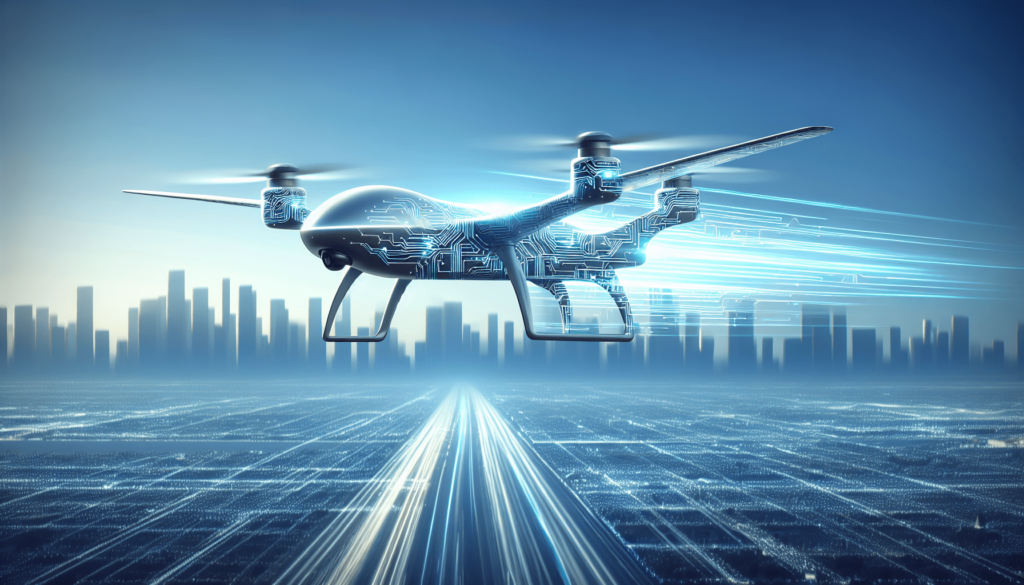
The Technology Behind AI in Drones
The technology underpinning AI in drones is a complex web of sensors, computational algorithms, and data processing capabilities. Understanding these elements sheds light on the remarkable synergy between AI and aerial vehicles.
Core AI Technologies
AI technologies used in drones encompass a blend of hardware and software components working in harmony. Here are the primary components:
- Machine Learning: Enables drones to improve their flight patterns and decision-making over time through data.
- Computer Vision: Allows drones to interpret and understand visual information from the world to navigate and interact.
- Natural Language Processing (NLP): Although nascent, opening avenues for voice-controlled drone operations.
Sensors and Data Collection
Drones are equipped with a variety of sensors that collect data which AI processes to enable intelligent operations.
Types of Sensors
| Sensor Type | Functionality |
|---|---|
| Imaging Sensors | Captures images and videos for analysis. |
| Lidar | Measures distance using laser light, aiding in mapping. |
| GPS | Provides precise location data for navigation. |
| Inertial Sensors | Assesses orientation and position in space. |
Data Connectivity
Drones rely on robust data connectivity to exchange information between onboard systems and ground control. With advancements in 5G technology, seamless data transfer has become more feasible, allowing real-time communication and updates.
Challenges and Ethical Considerations
With great power comes great responsibility; thus, the rise of AI in drones prompts essential discussions surrounding challenges and ethical considerations.
Technical Challenges
The road to fully autonomous drones is fraught with challenges, some of which include:
- Battery Life: Limited energy reserves reduce operational time and efficiency.
- Security Risks: Vulnerabilities in software can be exploited, posing security threats.
- Weather Conditions: Adverse weather can impede drone efficacy and safety.
Ethical and Privacy Concerns
As drones become more pervasive, concerns about privacy and ethics emerge.
- Data Privacy: The collection of vast amounts of data raises concerns around consent and usage.
- Trespassing: Drones may inadvertently invade restricted or private areas.
- Regulation Adherence: Balancing innovation with regulatory frameworks is crucial.
The Future: What’s Next for AI and Drones?
The future of AI in drones heralds even more exciting prospects, as technology and innovation soar together. Groundbreaking advancements could redefine our interaction with and reliance on drones.
Enhanced Autonomy
Expect increased autonomy, with drones capable of complex decision-making independently. This will likely extend to urban air mobility and drone taxis.
Integration with Smart Cities
Drones will become integral to smart city infrastructures, offering services such as traffic management, air quality monitoring, and public safety enhancements.
AI-Driven Swarm Technology
Swarm technology is a concept where multiple drones collaborate seamlessly. This approach could revolutionize search and rescue operations, environmental surveys, and data gathering.
Table: Potential Future Applications
| Potential Application | Impact |
|---|---|
| Urban Air Mobility | Reduces road traffic and enhances transit. |
| Disaster Response | Quicker, more efficient response times. |
| Autonomous Agriculture | Further streamlines resource management. |
In summation, artificial intelligence’s role in drones is pivotal and continually evolving. The infusion of AI boosts not only the operational capability of drones but also amplifies their commercial viability across sectors, providing solutions to complex challenges we face today. As we gaze skyward, the future promises a harmonious and intelligent coevolution of drones and AI, sculpting a high-tech landscape that once resided in the minds of science fiction authors.
